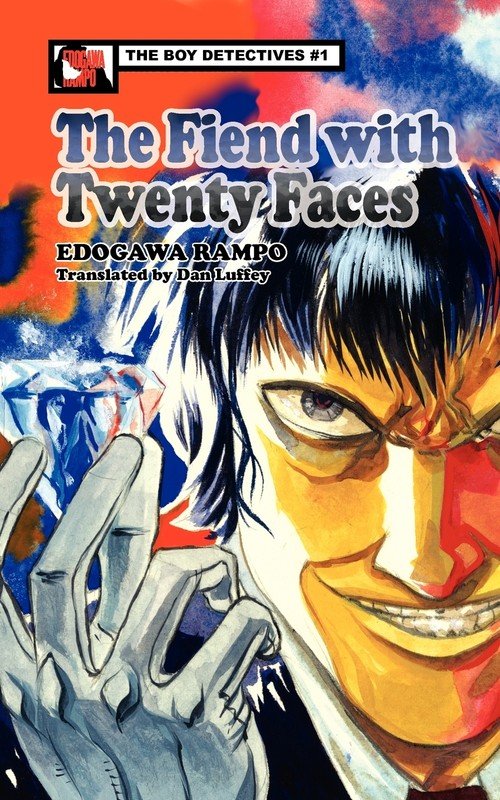Book Review: The Fiend with Twenty Faces by Edogawa Rampo
The year is 1936. Japan occupies Korea and Manchukuo, and has set its sights on the rest of China. But for most Japanese civilians, war is far away. What is exciting right now is the capers of the man known as The Fiend with Twenty Faces, a master of disguise and perhaps the greatest thief in all Japan. He only steals fine jewels and artworks, announces his arrival in advance, and so far has made the police look like absolute fools! There is only one man who might be able to catch Twenty Faces, the great detective Akechi Kogoro. Too bad he’s out of the country and only his young assistant Kobayashi Yoshio is available. Can a twelve year old really do anything against the wily rogue?

This is one of the classics of Japanese children’s literature, the first in a series starring Akechi Kogoro’s assistants, the Boy Detectives. It’s inspired numerous imitators and knockoffs, including direct connections like the anime The Daughter of Twenty Faces and the real-life criminals that called themselves the Monster with 21 Faces. It was a career-saver for Edogawa Rampo (pen name of Hirai Taro) as government censorship meant many of the grotesque and erotic themes of his work for adults were unusable.
The book opens with Twenty Faces threatening to steal diamonds in the possession of the wealthy Hashiba family. The police are called in and all possible precautions are taken. Naturally, Twenty Faces has a clever plan that bypasses all these precautions (that will be obvious to any mystery genre veteran) but ten year old Hashiba Soji just happened to put an animal trap in an unlikely place which prevents Twenty Faces from fully escaping.
In retaliation, Twenty Faces kidnaps Soji and announces that his next target will be the family’s statue of Kannon (the bodhisattva of compassion) and they are warned not to call the police in or Soji will not be returned. The Hashiba family realizes Twenty Faces didn’t rule out private detectives and call for Akechi Kogoro. He’s not available, but his clever and youthful assistant Kobayashi Yoshio comes up with a plan.
This first encounter ends in more or less a draw, as Yoshio gets back the stolen items, but Twenty Faces eludes capture easily.
After a couple of interim adventures, Akechi returns from his overseas trip to take over the investigation just as Twenty Faces announces his intention to rob the National Museum blind! Too bad Twenty Faces abducts the detective shortly thereafter. Only Kobayashi, Soji, and the newly formed Detective Boys are left to turn the tide.
Twenty Faces makes a good villain for a children’s book. He’s a decidedly nasty fellow, so the kids are in some believable peril, but has lines he won’t cross, so we know he won’t kill or seriously injure the heroes. He’s very clever, but has a bad habit of sticking around to gloat and explain how clever he was, which nearly gets him captured several times.
The narration calls you “Intrepid Reader” and confides things that might not be obvious from the dialogue. Middle schoolers on up should enjoy this immensely.
Note that this is very much a boys’ book; female characters are scarce and have almost no dialogue. Akechi’s young beautiful wife Fumio is repeatedly mentioned, but she is a homebody with no lines and no effect on the plot.
Recommended to fans of “phantom thief” and “great detective” anime and manga.
Here’s a movie loosely based on Twenty Faces:

